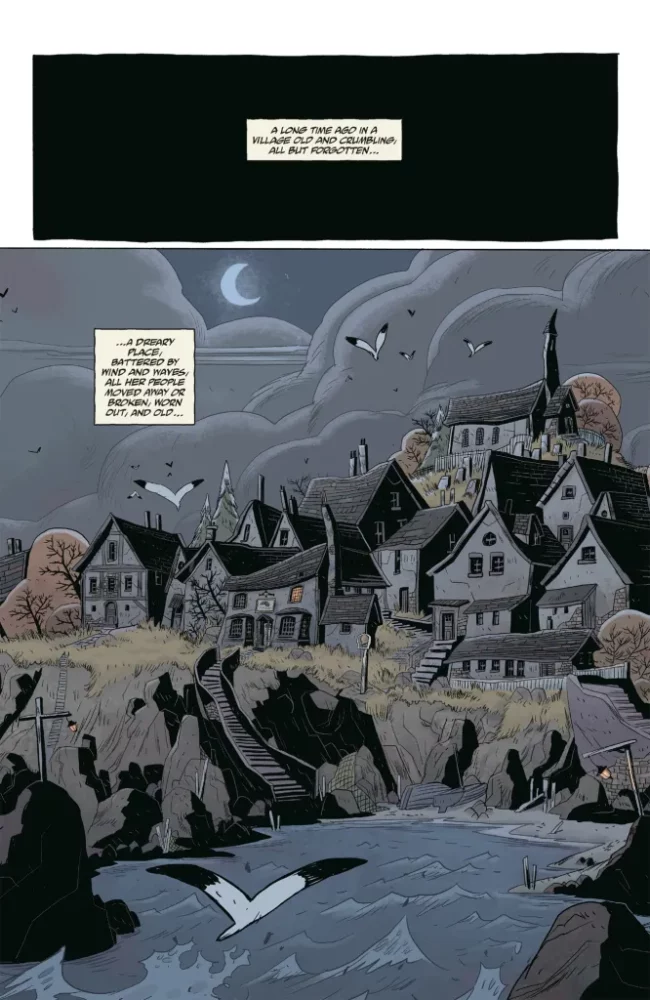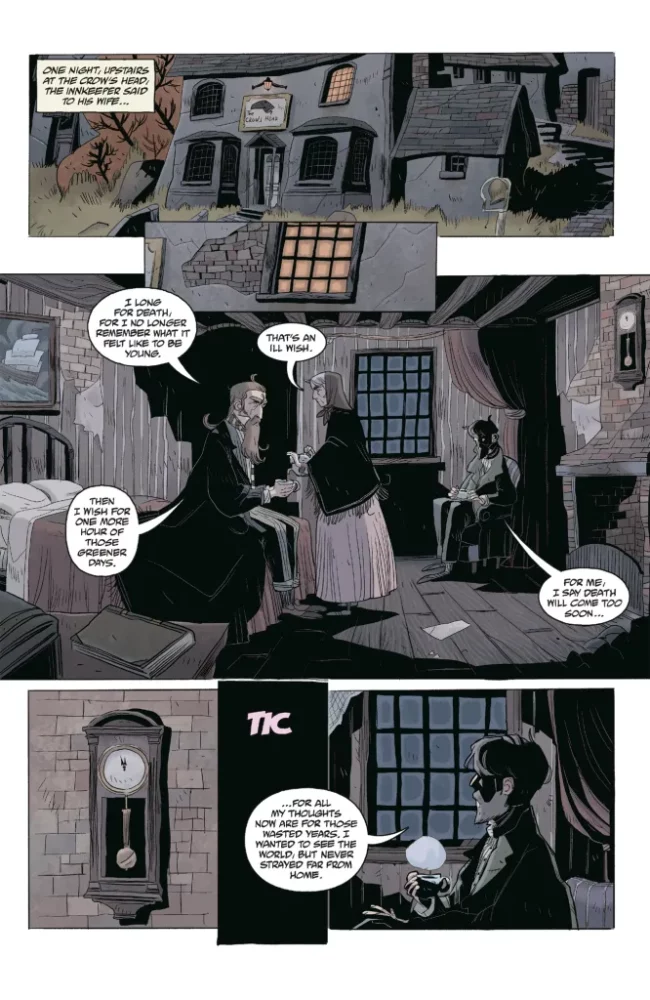Comics and the horror genre have had a long, fruitful partnership. In the United States at least, both modern incarnations have their roots in the pulps and penny dreadfuls of yesteryear: cheaply produced promises of chills and thrills often aimed at children or anyone else with a few nickels to spare. So it makes sense for a once-maligned genre and medium to stick together. Leonide the Vampyr: Miracle at the Crow’s Head from writer Mike Mignola, artist Rachele Aragno, colorist Dave Stewart, and letterer Clem Robbins calls back to the simpler gothic tales of the past with the story of a mysterious Vampire girl and the unsuspecting townsfolk that gather around her.

A long gloom has fallen over a crumbling little town by the sea. An innkeeper confesses to his wife that he longs for death. Barring that, he wishes for a single hour to relive his youth. Another townsman regrets a life spent without seeing the world. But while the two lament their fates, an old ship crashes near the town at midnight. No crew is found in the wreckage. Only a strange white coffin. The moment the casket is opened, a mysterious child springs to life from within. Impromptu celebration grips the town as they rejoice in the girl’s miraculous survival. Though her presence may come from forces more sinister than the town suspects…
Mignola writes Leonide the Vampyr as a simple, direct morality tale. Characters enter the story speaking aloud their fears and desires. Only Leonide herself remains elusive, talking in mysterious aphorisms like “Do not question when a fair wind blows…” But it’s the sparse, to-the-point prose that helps gives the story its power. The dialogue focuses mostly on grander, universal human wants and follies, while the quieter moments let the art bring out an individual sense of personality and atmosphere. Which isn’t to say the dialogue doesn’t offer character of its own. Leonide is often a source of dry wit. But it’s an impressive balancing act to tell a complete story in 22 pages that relies on quiet atmosphere and gives the art plenty of room to breathe.

It was Rachele Aragno’s sketch of a vampire girl that first provided the inspiration for this story, and it’s easy to see why. For as adept as Aragno is at illustrating the more horrific parts of the story, she never fully shows her hand when it comes to Leonide. The young vampire girl is playful, but not in the overtly creepy way often seen in horror stories about children. What’s off-putting about Leonide is how breezy and casual she feels. It’s a great contrast to the weary, put-upon world she inhabits. All the houses in the town feel crooked and twisted, brick often peeking out from behind peeling wallpaper.

Dave Stewart uses plenty of grey, beige, and dark blue throughout the issue, hammering home the dreary atmosphere of the small sea town. Leonide, in contrast, is a striking off-white with red hair and golden eyes. And when a party is thrown to celebrate her resurrection, the palette brightens to greens, purples, and a warm brown. Though the townsfolk to bear to listen to a monk who warns them of their mortality, a brown, emaciated walking corpse dressed in black and grey.
Clem Robbins letters the issue in clear, bold, capitalized letters. The sound effects are all fittingly simple, often going for thick bubble letters filled in a single, solid color. Though there are slight variations to bring out the texture of each sound. The gong of a bell gets elongated, squashed-together text, which a sudden thump gets slanted, jumbled letters.
VERDICT
Leonide the Vampyr: Miracle at the Crow’s Head is a simple, self-contained tale that makes an excellent read to welcome the Halloween season. It’s available from Dark Horse now, and well worth your time.

